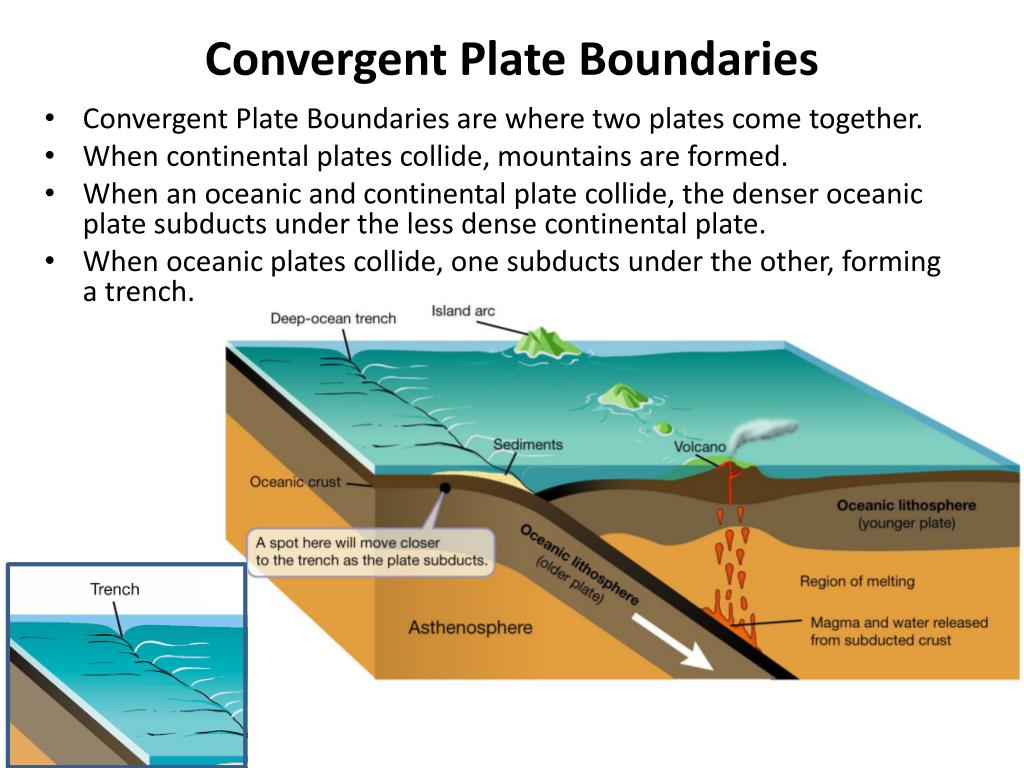

The overlying continental rocks will also be folded and pushed upwards to make fold mountains.Īn excellent example of this is along the Western edge of the South American Plate. This creates a very thick, sticky magma which is explosive if it reaches the surface (becomes lava). Rising magma will be formed and as it rises it starts to absorb the overlying continental crust. When a plate made up of oceanic crust is forced into a plate made up of continental crust the oceanic crust plate will be forced downwards into the mantle ( subduction). Image: Active Margin - Booyabazooka © Public Domain This magma is different from oceanic crust and it will form the types of rocks called continental crust. The seawater lowers the melting point of some of the rock melts and form magma. The oceanic crust has lots of cracks within it filled with seawater. When subduction happens a deep trench is formed as surface layers are dragged downwards. When two plates made up of oceanic crust are forced together then one of them will be forced downwards into the mantle. Image: Oceanic-oceanic convergence - USGS © Public Domain Image: Continental-continental destructive plate boundary - domdomegg © Wikimedia Commons under Creative Commons Attribution-Share Alike 4.0 International If one of the plates is made up of oceanic crust then it can be forced downwards into the mantle where parts of it will melt. Destructive Boundary (as crustal material can be melted here).


When two plates move apart the boundary will commonly have one of three names: Similar plate boundaries may have different terms used to describe them we will try and give you the main names used and what they mean. Remember the structure of the earth that the rigid plates (crust and upper mantle) move on currents in the hotter and softer rocks of the mantle below them. In linked article 2 we started to think about the different boundaries between tectonic plates. Image: Tectonic plate boundaries - Jose F.


 0 kommentar(er)
0 kommentar(er)
